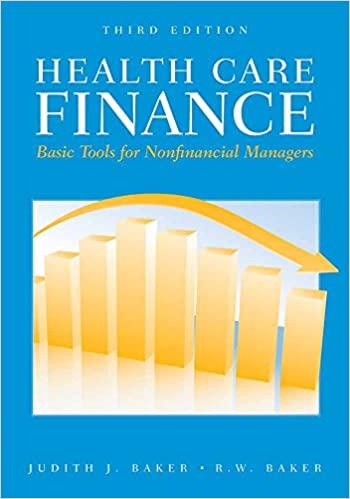Answered step by step
Verified Expert Solution
Question
1 Approved Answer
Intermediate Calculations 0 1 2 3 4 Units sold Sales price per unit ( excl . depr. ) Variable costs per unit ( excl .
Intermediate Calculations
Units sold
Sales price per unit excl depr.
Variable costs per unit excl depr.
Nonvariable costs excl depr.
Sales revenue
Required level of net operating working capital
Basis for depreciation
Annual equipment depr. rate
Annual depreciation expense
Ending Bk Val: Cost Accum Dep'rn
Salvage value
Profit or loss on salvage
Tax on profit or loss
Net cash flow due to salvage
Years
Cash Flow Forecast
Sales revenue
Variable costs
Nonvariable operating costs
Depreciation equipment
Oper. income before taxes EBIT
Taxes on operating income
Net operating profit after taxes
Add back depreciation
Equipment purchases
Cash flow due to change in NOWC
Net cash flow due to salvage
Net Cash Flow Time line of cash flows
Key Results: Appraisal of the Proposed Project
Net Present Value at
IRR
MIRR
Payback
Discounted Payback
Data for Payback Years Years
Net cash flow
Cumulative CF
Part of year required for payback
Data for Discounted Payback Years Years
Net cash flow
Discounted cash flow
Cumulative CF
Part of year required for discounted payback
b Now conduct a sensitivity analysis to determine the sensitivity of NPV to changes in the sales price, variable costs per unit, and number of units sold. Set these variables values at and above and below their basecase values. Include a graph in your analysis.
Deviation st YEAR UNIT SALES Note about data tables. The data in the column input should NOT be input using a cell reference to the column input cell. For example, the base case st Year Unit Sales in Cell B should be the number and NOT have the formula D in that cell. This is because you'll use D as the column input cell in the data table and if Excel tries to iteratively replace Cell D with the formula D rather than a series of numbers, Excel will calculate the wrong answer. Unfortunately, Excel won't tell you that there is a problem, so you'll just get the wrong values for the data table!
from Base NPV
Base Case
Deviation SALES PRICE Deviation VARIABLE COST
from Base NPV from Base NPV
Base Case $ Base Case $
Deviation NPV at Different Deviations from Base
from Sales Variable
Base Case Units Sold Price CostUnit
$ $ $
$ $ $
$ $ $
$ $ $
$ $ $
Range
c Now conduct a scenario analysis. Assume that there is a probability that bestcase conditions, with each of the variables discussed in Part b being better than its basecase value, will occur. There is a probability of worstcase conditions, with the variables worse than base, and a probability of basecase conditions. Hint: Use Scenario Manager. Go to the Data menu, choose WhatIfAnalyis, the choose Scenario Manager. After you create the Scenario's, you can pick a scenario and type in the resulting NPV but be sure to return the Scenario to the basecase afterward Or you can create a Scenario Summary and use a cell reference to the Scenario Summary worksheet to show the NPV for each scenario.
Unit Sales Sales Price per Unit Variable Costs per Unit
Scenario Probability NPV
$
Best Case $ $
Base Case $ $
Worst Case $ $ $
Expected NPV
Standard Deviation
Coefficient of Variation Std Dev Expected NPV
d If the project appears to be more or less risky than an average project, find its riskadjusted NPV IRR, and payback.
CV range of firm's averagerisk project: to
Lowrisk WACC
WACC
Highrisk WACC
Riskadjusted WACC
Risk adjus

Step by Step Solution
There are 3 Steps involved in it
Step: 1

Get Instant Access to Expert-Tailored Solutions
See step-by-step solutions with expert insights and AI powered tools for academic success
Step: 2

Step: 3

Ace Your Homework with AI
Get the answers you need in no time with our AI-driven, step-by-step assistance
Get Started


